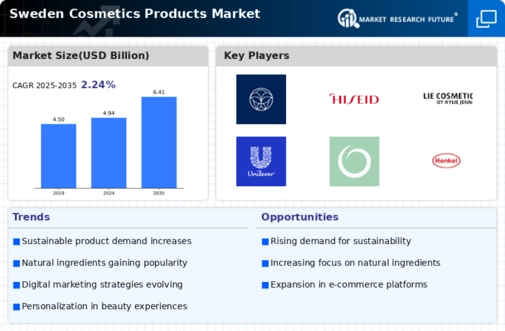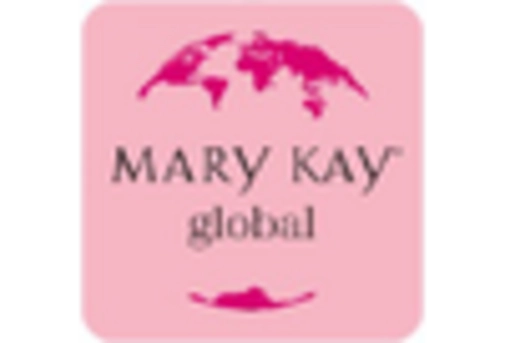Market Growth Projections
The Global Sweden Cosmetics Products Market Industry is poised for growth, with projections indicating a rise from 4.94 USD Billion in 2024 to 6.41 USD Billion by 2035. This growth trajectory suggests a compound annual growth rate (CAGR) of 2.4% from 2025 to 2035. Factors contributing to this growth include the increasing demand for innovative products, the rise of e-commerce, and a heightened focus on sustainability. As consumer preferences evolve, the market is likely to adapt, presenting opportunities for both established brands and new entrants. This upward trend underscores the dynamic nature of the cosmetics industry in Sweden.
Rise of E-commerce Platforms
The Global Sweden Cosmetics Products Market Industry is witnessing a significant transformation due to the rise of e-commerce platforms. Online shopping has become increasingly popular, providing consumers with convenient access to a wide range of cosmetic products. This shift is particularly pronounced among younger demographics who prefer the ease of online purchasing. E-commerce sales are projected to grow steadily, contributing to the overall market growth at a CAGR of 2.4% from 2025 to 2035. Brands that invest in robust online marketing strategies and user-friendly websites are likely to benefit from this trend, as they can reach a broader audience and enhance customer loyalty.
Increased Focus on Personalization
Personalization is emerging as a key driver in the Global Sweden Cosmetics Products Market Industry. Consumers are increasingly seeking products tailored to their individual needs and preferences. This trend is evident in the rise of customizable cosmetics, where brands offer options for consumers to create their own formulations. The demand for personalized beauty solutions is expected to grow, as consumers value unique experiences. Companies that leverage data analytics to understand consumer behavior and preferences are likely to thrive in this evolving landscape. This focus on personalization not only enhances customer satisfaction but also fosters brand loyalty, contributing to the market's overall growth.
Sustainability and Ethical Practices
Sustainability and ethical practices are becoming central to the Global Sweden Cosmetics Products Market Industry. Consumers are increasingly aware of the environmental impact of their purchases and are gravitating towards brands that prioritize eco-friendly practices. This includes the use of recyclable packaging, cruelty-free testing, and sustainable sourcing of ingredients. As a result, companies that adopt these practices are likely to see a positive response from consumers, leading to increased sales and brand loyalty. The emphasis on sustainability is expected to drive market growth, aligning with the projected increase in revenue from 4.94 USD Billion in 2024 to 6.41 USD Billion by 2035.
Growing Demand for Natural Ingredients
The Global Sweden Cosmetics Products Market Industry is experiencing a notable shift towards natural and organic ingredients. Consumers increasingly prioritize products that are free from synthetic chemicals, which has led to a rise in brands focusing on sustainable sourcing. This trend is reflected in the growing sales of organic cosmetics, projected to reach 4.94 USD Billion in 2024. Brands that emphasize transparency in ingredient sourcing are likely to capture a larger market share, as consumers become more discerning about product formulations. This demand for natural ingredients not only aligns with consumer preferences but also supports the broader sustainability movement within the cosmetics sector.
Technological Advancements in Product Development
Technological innovations play a pivotal role in shaping the Global Sweden Cosmetics Products Market Industry. The integration of advanced technologies such as artificial intelligence and augmented reality in product development and marketing strategies enhances consumer engagement. For instance, brands are utilizing AI to analyze consumer preferences and tailor products accordingly. Moreover, augmented reality applications allow customers to virtually try products before purchasing, thereby improving the shopping experience. As these technologies evolve, they are expected to drive growth in the market, potentially contributing to an increase in revenue from 4.94 USD Billion in 2024 to 6.41 USD Billion by 2035.




















Leave a Comment